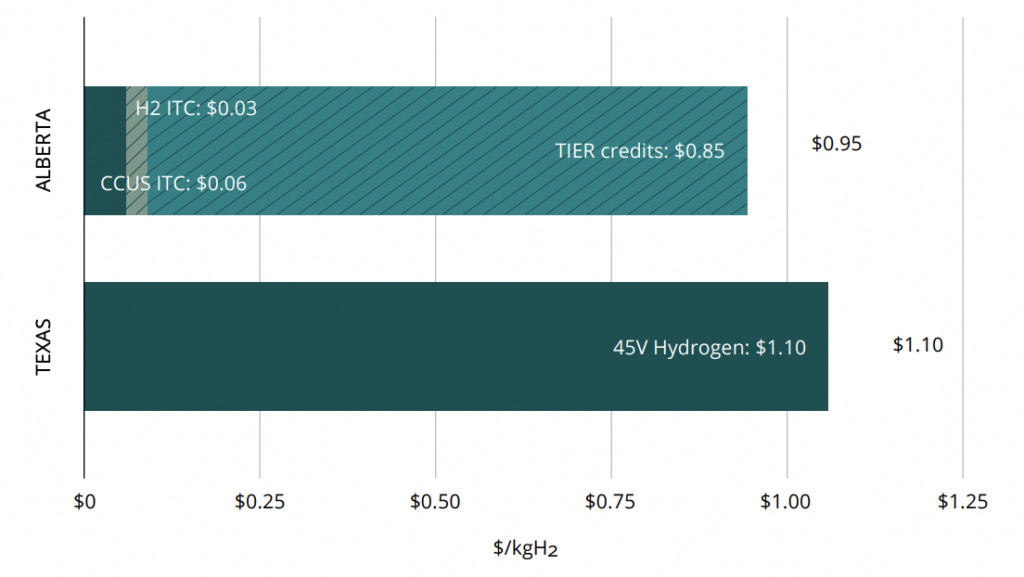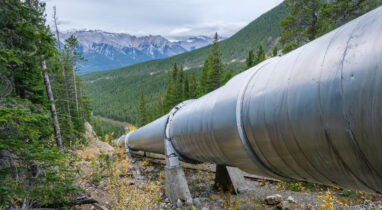Canada must act urgently to close the incentive gaps for low-carbon technology investment. We’re at risk of missing out on big opportunities because most of our investment incentives aren’t competitive with the United States.
While Budget 2023 advanced several important policies to keep Canada in the race, there’s much more to do to close the incentive gaps. Without further action, it will be difficult to systematically attract investment in low-carbon technologies.
That’s the conclusion of new modelling released today in an updated version of a working paper by Clean Prosperity and The Transition Accelerator.
The working paper incorporates a series of investment tax credits announced in Budget 2023 and examines how Canadian technology stacks up across 10 key industries including hydrogen, carbon capture, and renewable electricity.
“It’s as if Canada is offering companies a coach ticket with the chance of an upgrade, while the Americans are offering to send them straight to first class. But there are strategic moves we can make before the American planes take off.”
Michael Bernstein, Executive Director, Clean Prosperity
“Compared to the United States, Canada still isn’t a competitive destination for low-carbon investment,” said Clean Prosperity Executive Director and working paper co-author Michael Bernstein.
“It’s as if Canada is offering companies a coach ticket with the chance of an upgrade, while the Americans are offering to send them straight to first class. But there are strategic moves we can make before the American planes take off.”
The United States’ Inflation Reduction Act (IRA) continues to deliver massive subsidies for a wide range of low-carbon tech, mainly in the form of production tax credits. Canada continues to introduce its own incentives in response, but so far these measures aren’t enough to make Canada as attractive an investment destination.
However, “There’s an opportunity here for Canada to take advantage of. With a smart industrial policy response to the IRA, Canada can stay competitive and grow a prosperous low-carbon economy,” says co-author and Transition Accelerator Research Director, Bentley Allan.
The working paper recommends that the federal government introduce additional measures to improve Canada’s competitiveness as a destination for low-carbon investment, namely:
- Carbon contracts for difference, a kind of insurance policy on the future value of carbon credits that will give firms the confidence to make big decarbonization investments. The paper recommends finalizing this program in time for the 2023 Fall Economic Statement.
- Additional financial support and a strategic approach to supporting priority sectors where Canada can compete globally and generate significant economic benefits, good jobs, and manufacturing value added.
Below: How the specific measures proposed by Clean Prosperity and The Transition Accelerator in their new working paper could help close the incentive gap between Canada and the United States.
How contracts for difference could boost blue hydrogen
One industry the working paper examines is blue hydrogen production, which can be produced with low greenhouse gas emissions and offers an emissions-free, affordable fuel for transport trucks, trains, ships, and airplanes.
Canada recently announced an investment tax credit (ITC) that provides up to a 40% refundable credit for investments in hydrogen production, with the precise credit amount tied to the carbon intensity of the produced hydrogen. The working paper finds that this ITC offers the equivalent of $0.03 per kilogram in support for an at-scale blue hydrogen facility. In contrast, the US Inflation Reduction Act (IRA) would provide this same facility $1.10. This $1.07 gap means that a facility like the proposed Air Products blue hydrogen project in Edmonton would be leaving approximately $500 million per year on the table by locating in Alberta versus in the US.
Yet, there is a way to close the gap cost-effectively. This same project could become a competitive investment proposition if the federal government guarantees the future value of the facility’s carbon credits using a carbon contract for difference.
With a contract for difference to backstop the value of its carbon credits, the carbon credits could be worth up to 85 cents per kg of blue hydrogen, closing most of the incentive gap.
Average gross revenue from policy sources for hypothetical 525,000tH2/year autothermal reforming project, 2025-2034 ($ per kg of hydrogen) (Canadian dollars)

Strategic financial support: how?
In addition to carbon contracts for difference, the working paper recommends that the federal government develop sector-specific strategies that match incentives in high-priority areas, concede a disadvantage in others, and seek to open up bankable advantages in areas not covered by the IRA. For each priority sector, the federal government should develop targets, undertake detailed analyses of challenges and opportunities, and establish processes for strategic collaboration between government and industry.
In developing this strategy the working paper recommends the federal government:
- Develop industrial policy targets to create focus, set out clear objectives, and guide policy decisions. Targets must be concrete economic goals that help guide real world deployment.
- Develop deep, sector-specific analysis to understand opportunities and market conditions in priority sectors.
- Pursue industrial strategy in close collaboration with industry, mediated by independent expertise. The Industrial Strategy Tables and the Regional Energy and Resource Tables, are good forums for these conversations.
Read the working paper
About Clean Prosperity and The Transition Accelerator
Clean Prosperity is a Canadian climate policy organization. We advocate for practical climate solutions that reduce emissions and grow the economy. Learn more at CleanProsperity.ca.
The Transition Accelerator is a pan-Canadian organization that works to identify and advance viable pathways to Canada’s 2050 climate targets. Learn more at TransitionAcclerator.ca.
For more information
Contact media@cleanprosperity.ca




